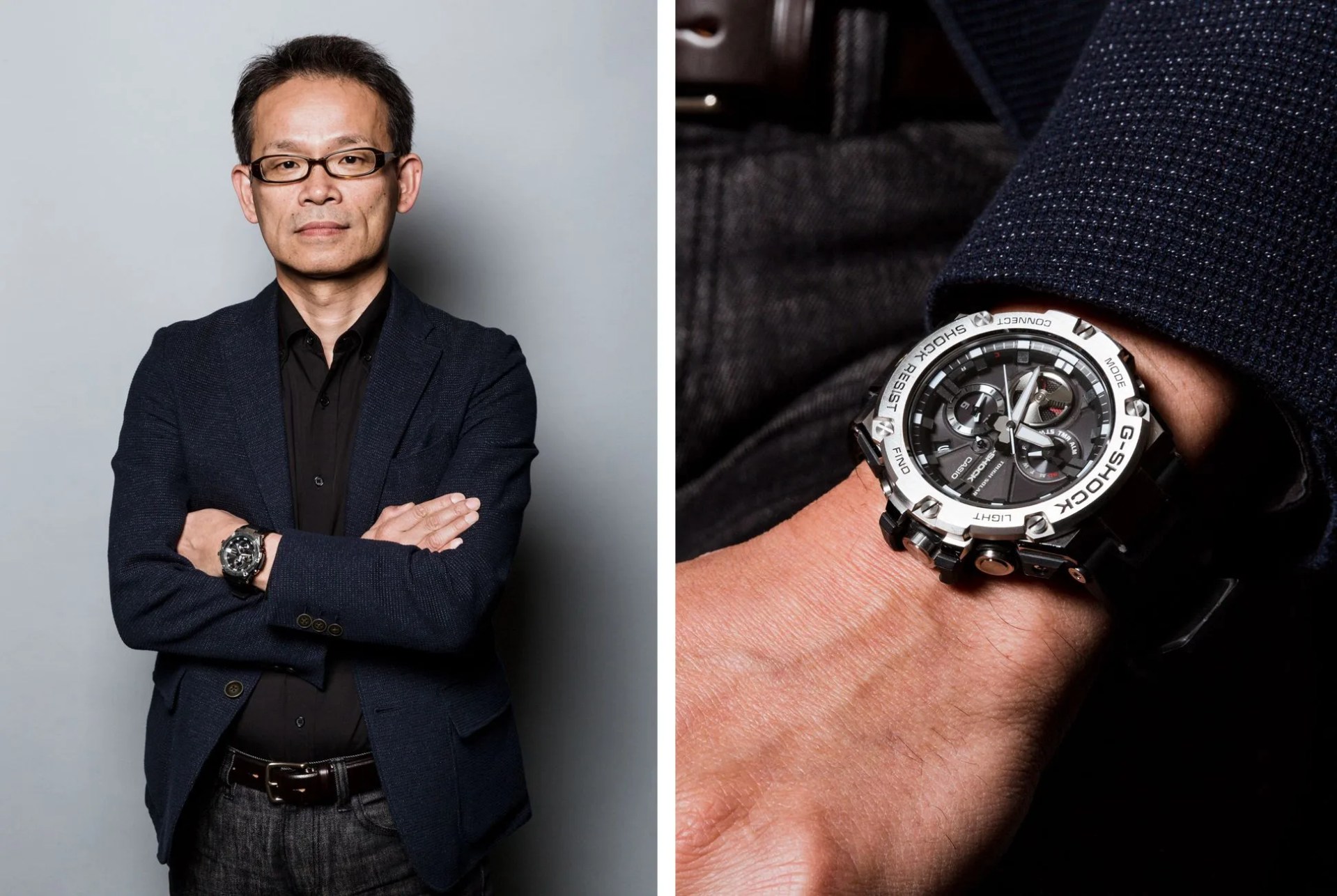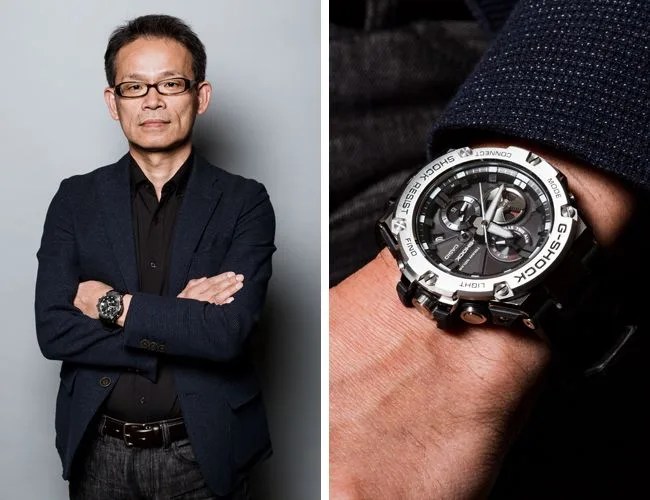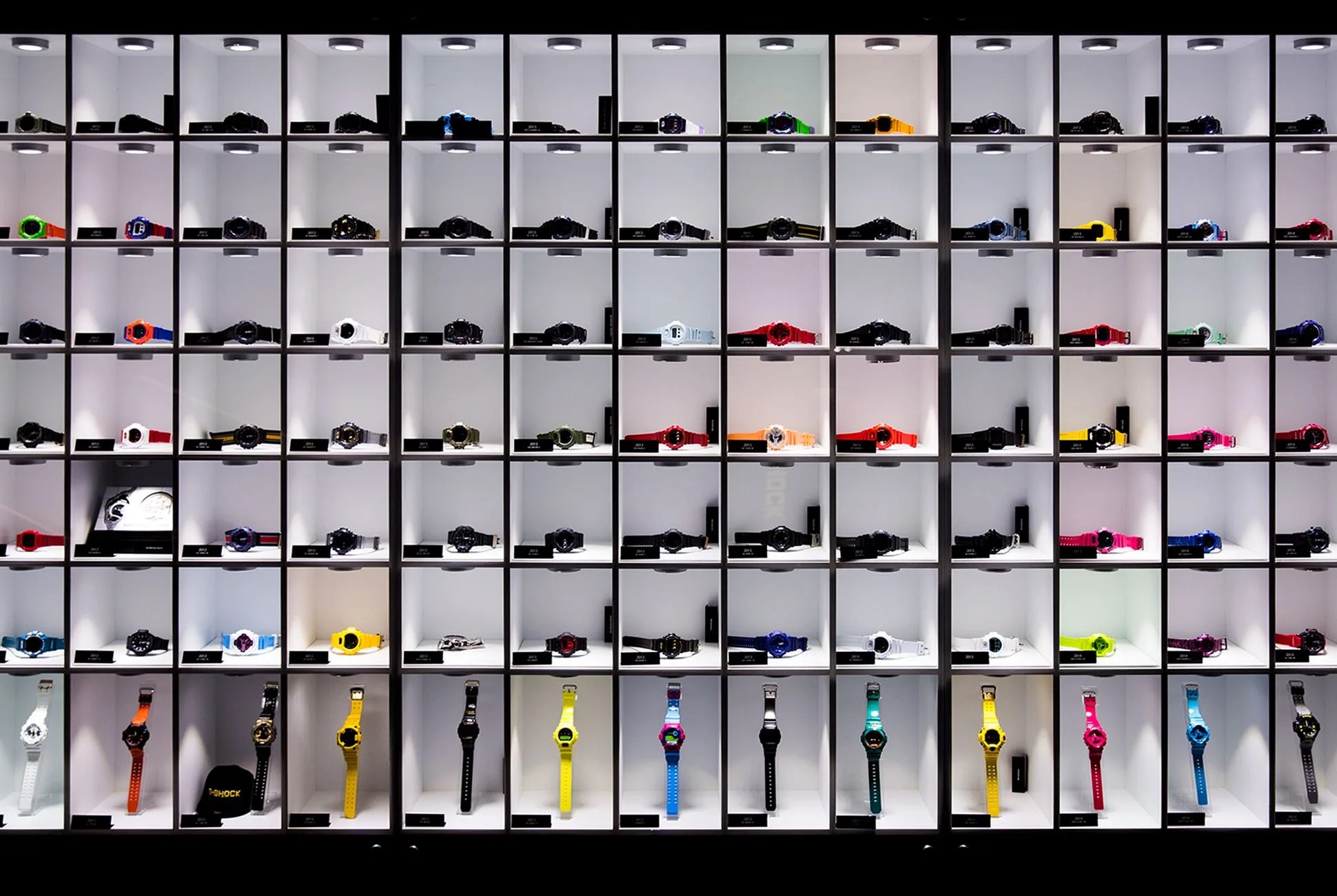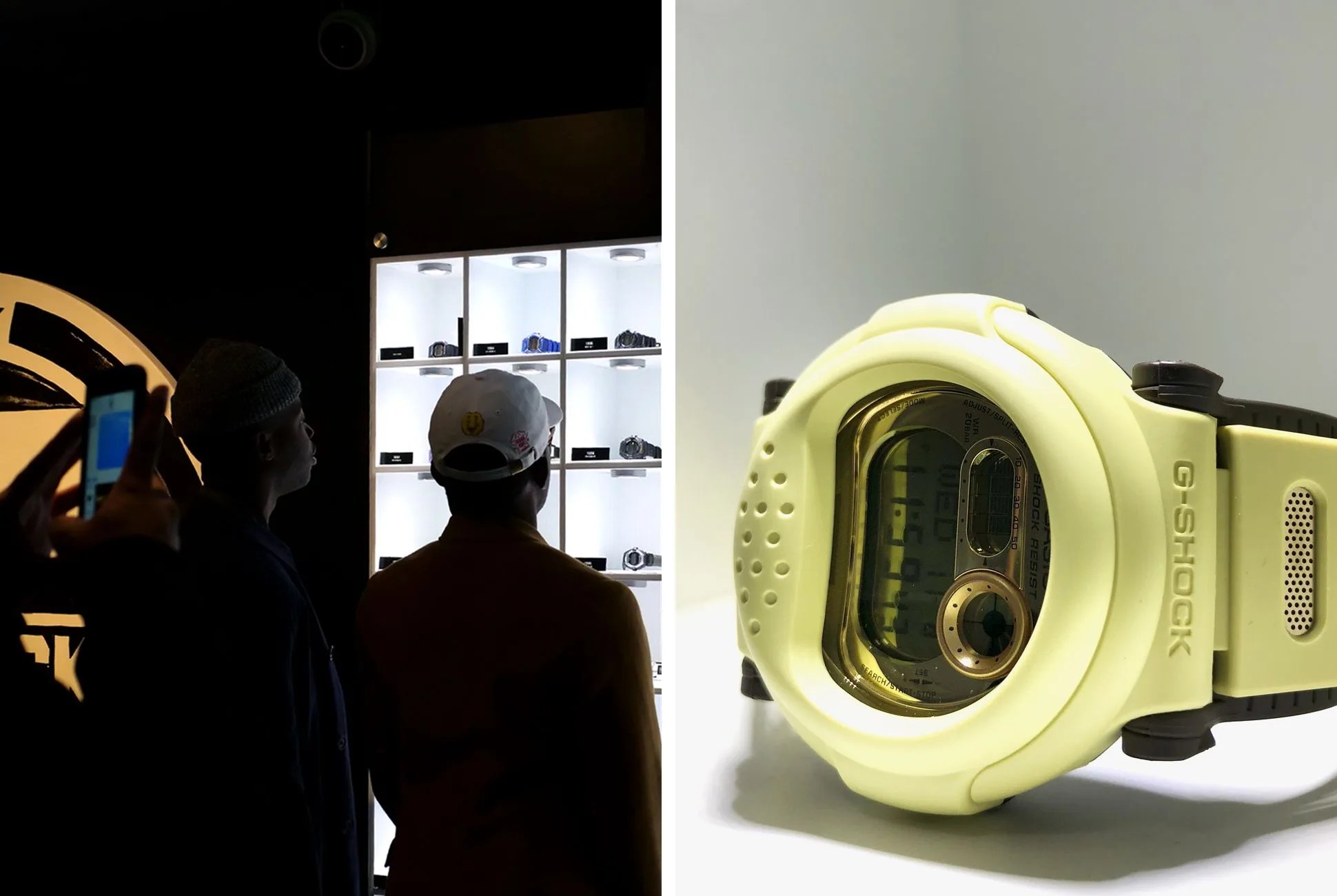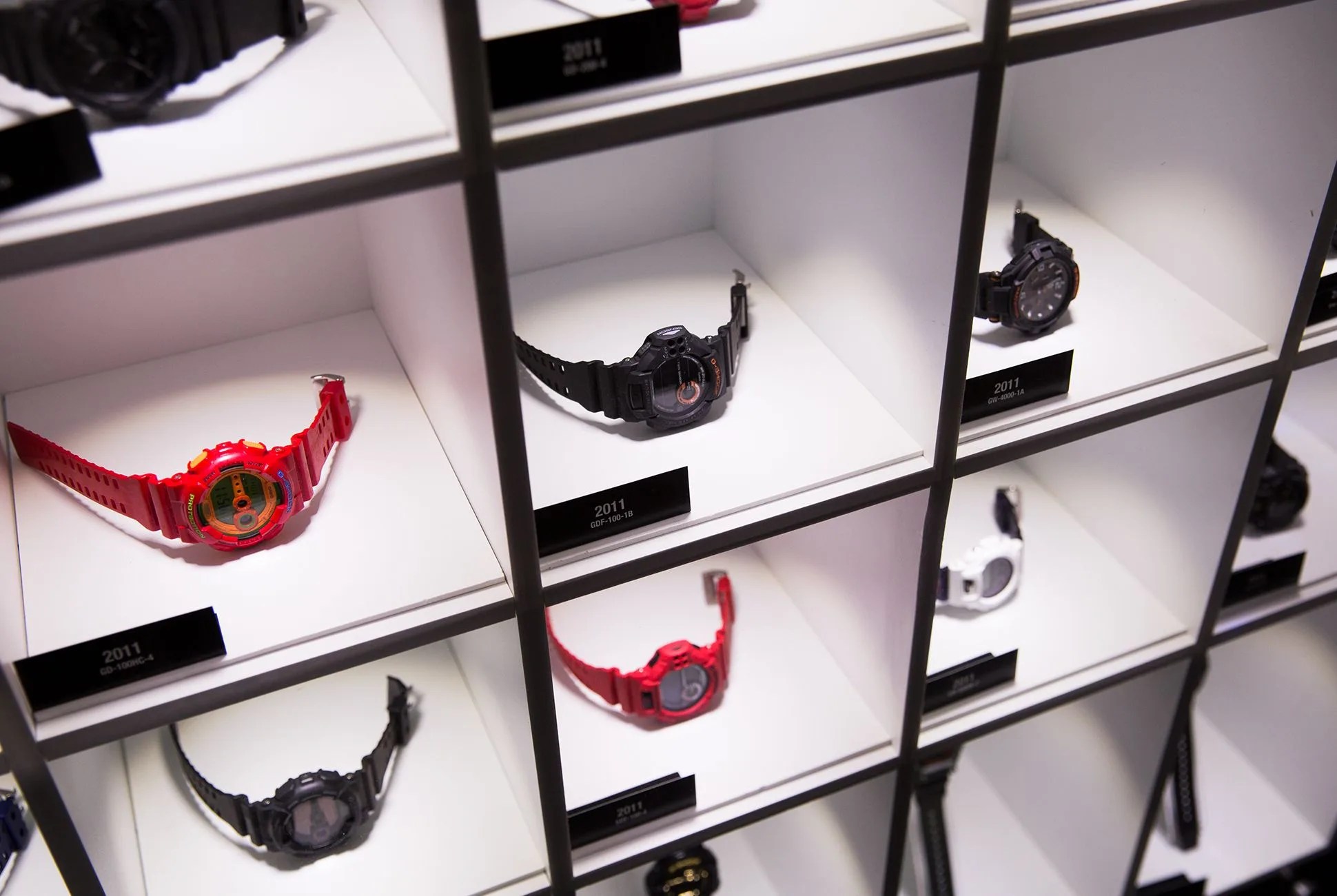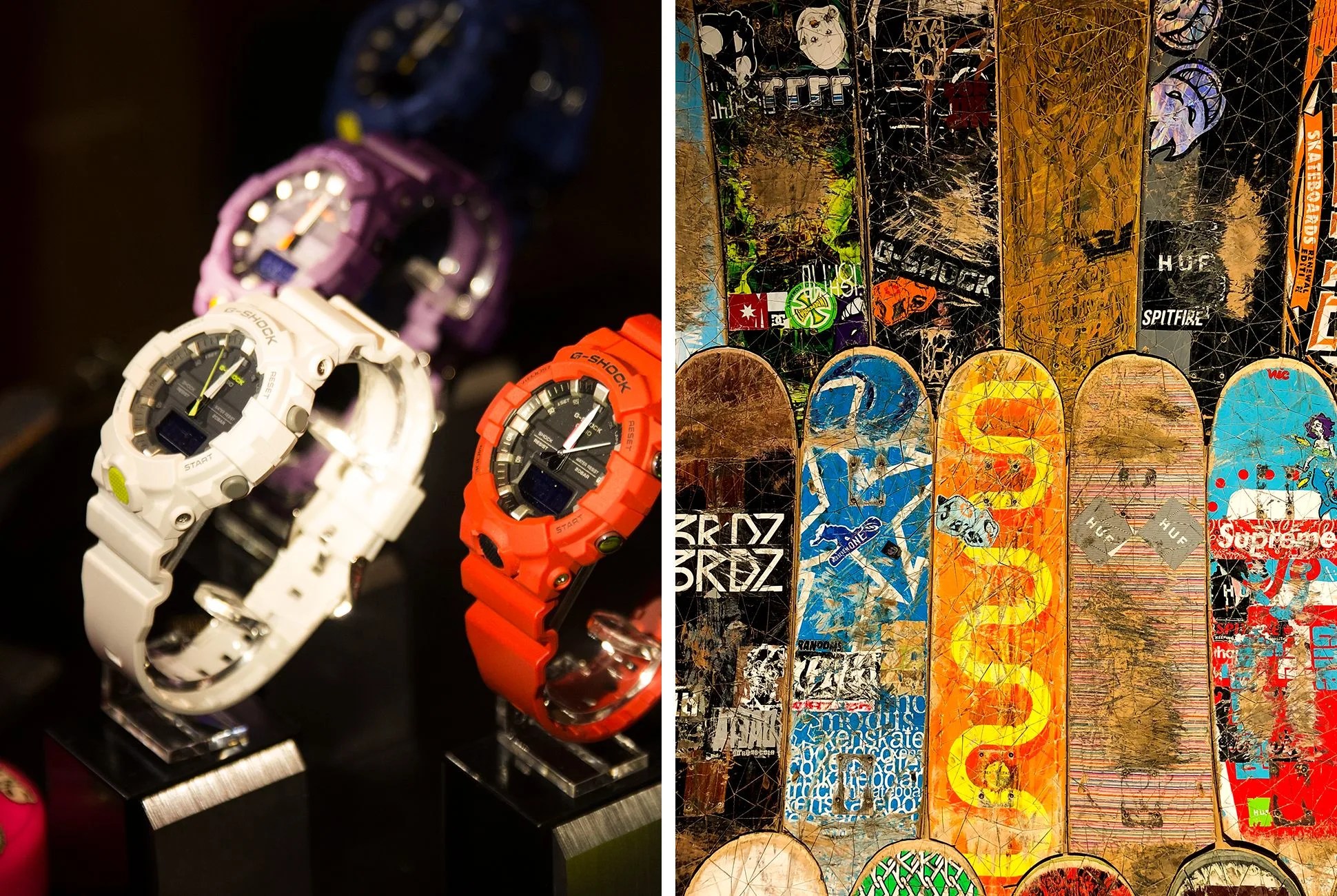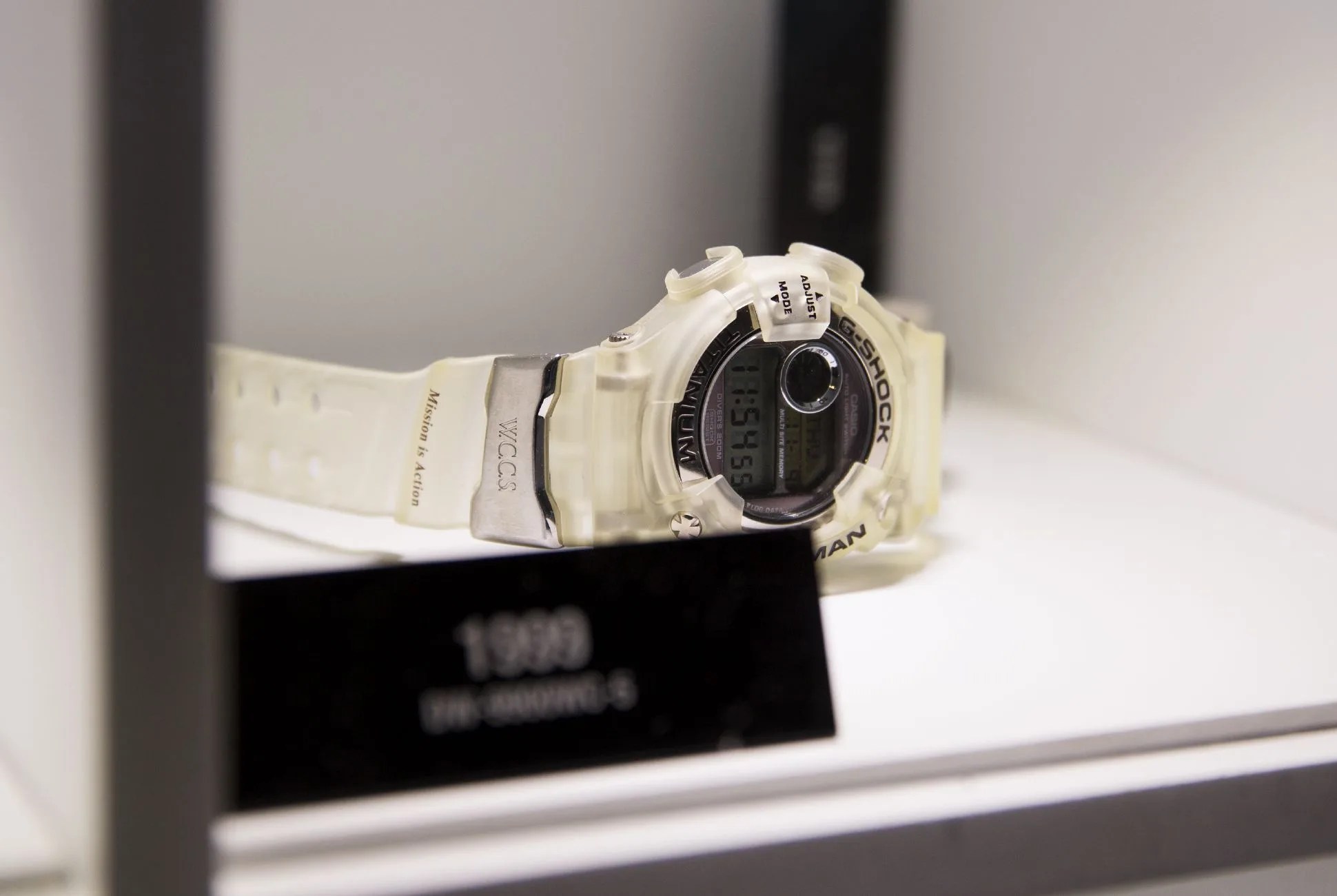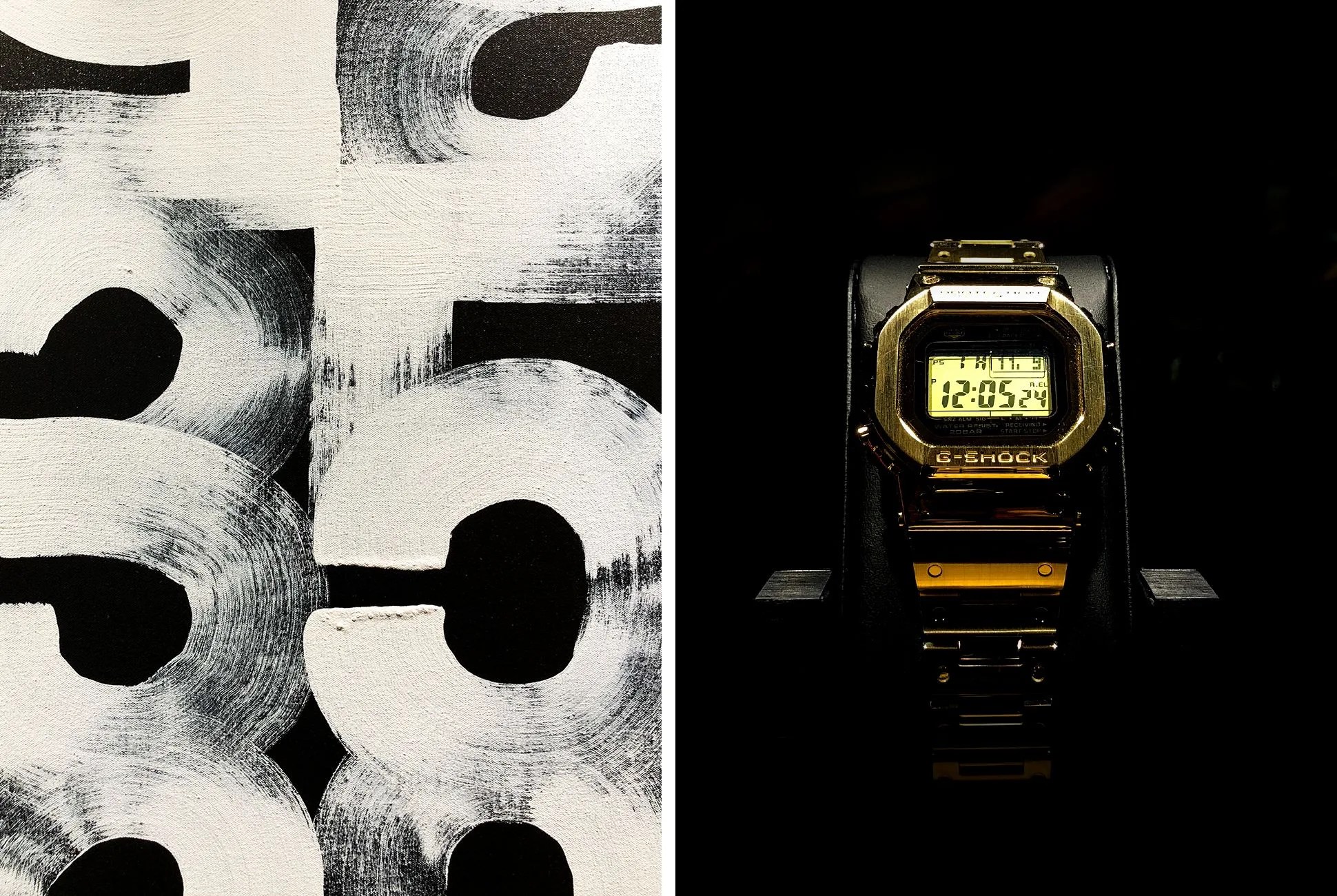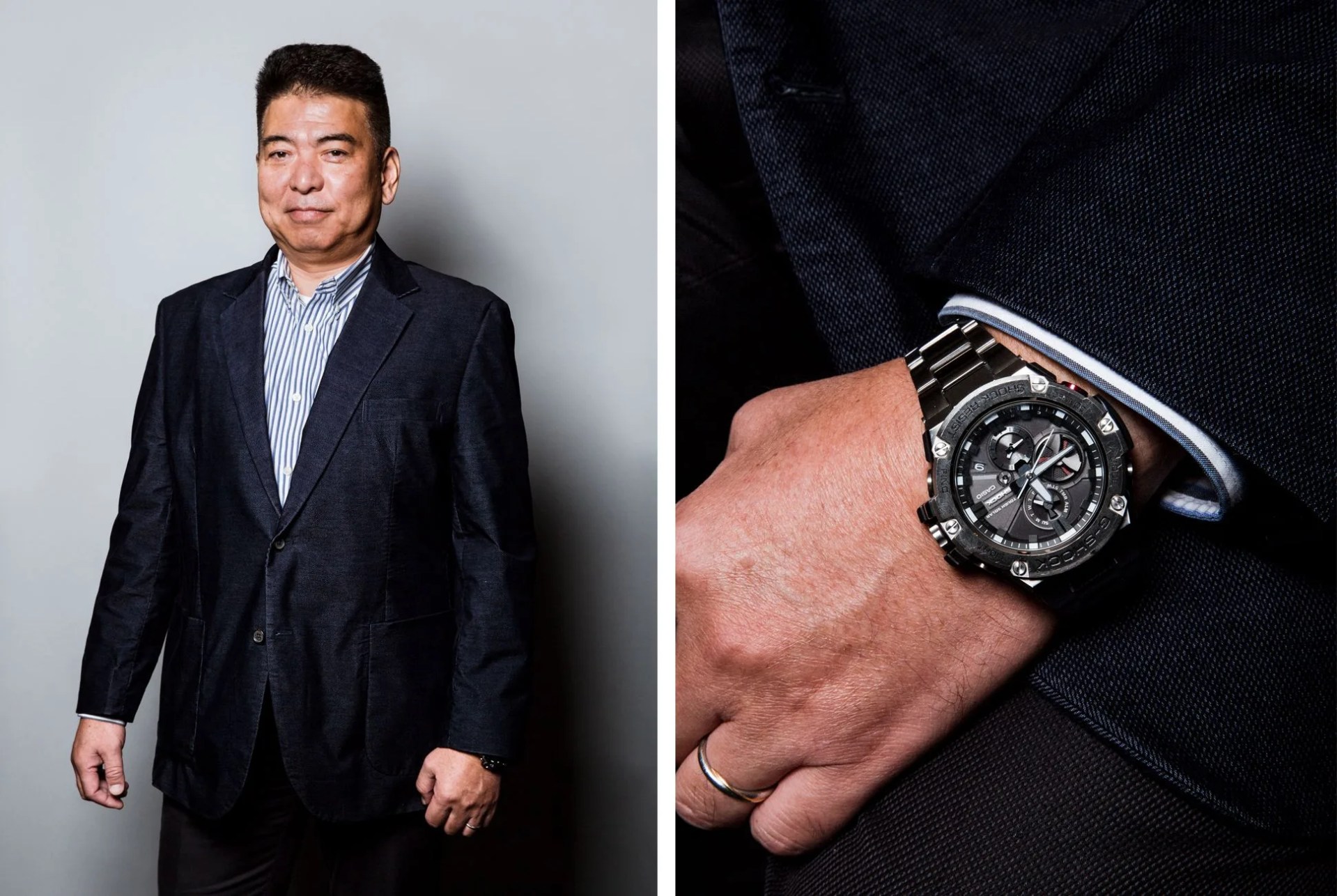6 photos

The story has become a modern legend: Kikuo Ibe, creator of the G-Shock, dropped a beloved timepiece gifted by his father, and as it cracked on impact, he became determined to design the toughest watch in the world. It took more than two years and more than 200 prototypes — many of which were tested by dropping them from a 10 meter-high bathroom window at Casio’s offices. He eventually got it right and the original G-Shock DW-5000C launched in 1983.
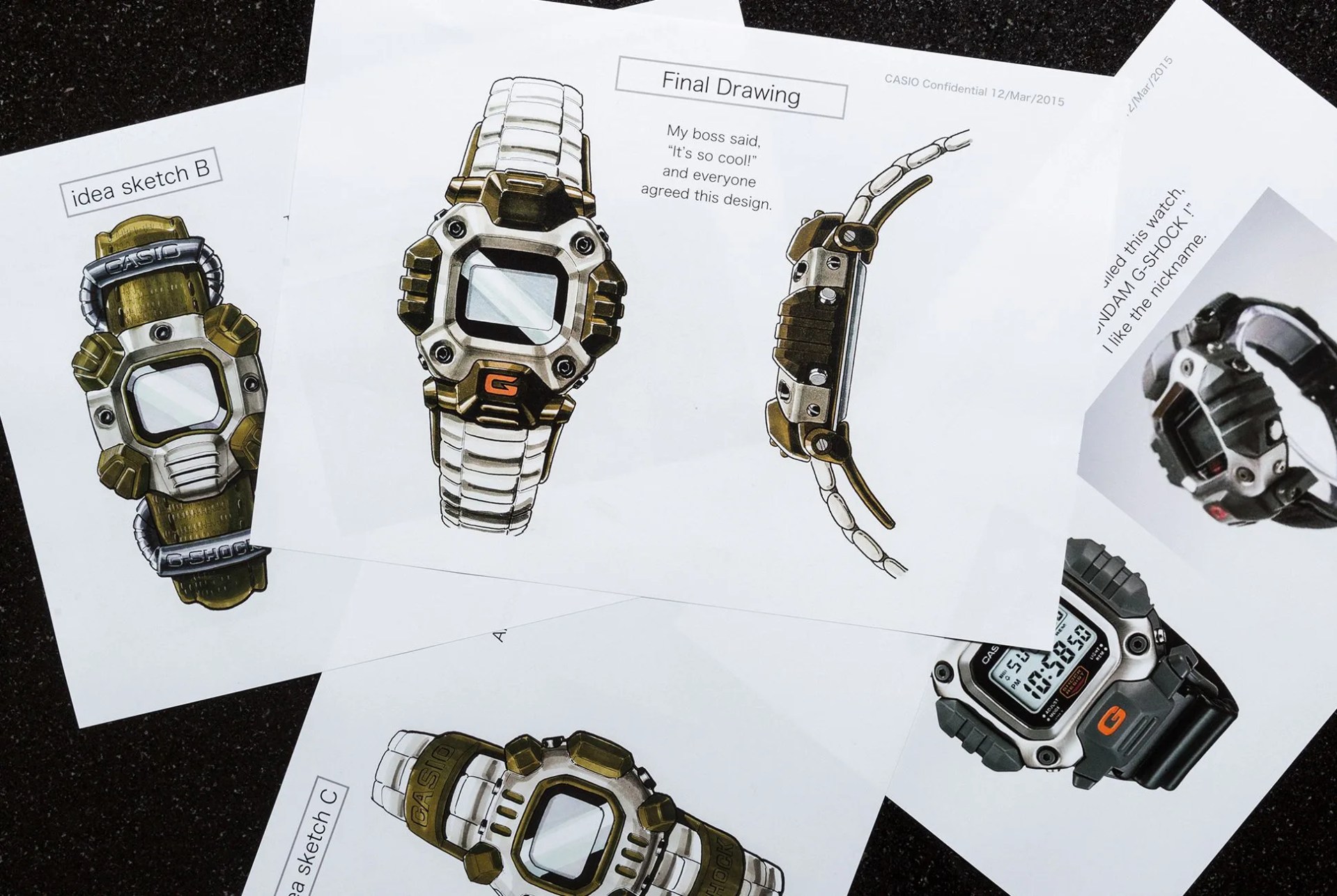
Ryusuke Moriai’s first sketches for G-Shock.
G-Shock quickly became the favored timepiece of skateboarders in Japan, and as more iterations were developed, it launched into full-on cultural phenom status. Though that might have been a surprise to some of its top-tier staff members, they’ve stuck at it for decades continuing to push the design and durability standards of the brand. Earlier this month, the G-Shock team set up an exhibition — with walls of product from G-Shock’s inception to present day — at Madison Square Garden in New York. The one-night event celebrated the brand’s incredible legacy over the last 35 years, starting out from one man’s solo quest to make a nearly unbreakable timepiece. We caught up with G-Shock’s head of R&D Tatsuya Izaki and head designer Ryusuke Moriai while in New York celebrating the line’s 35th anniversary — to talk personal milestones, toughness-testing, and outer space.
